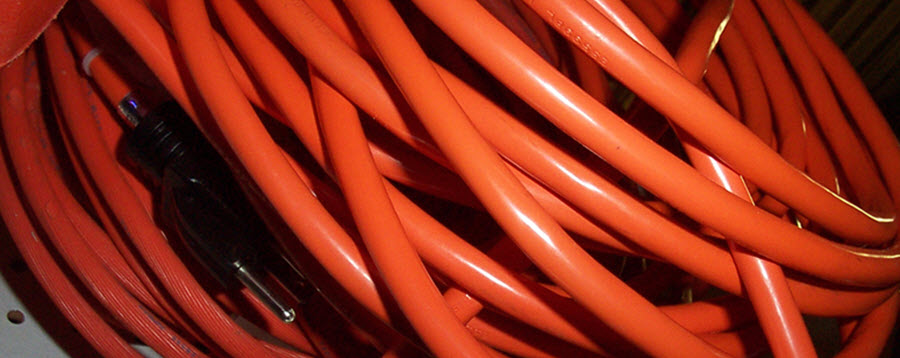
Safety Tip: 5 Extension Cord Rules for a Safer Worksite

Electrical-related injuries are the second-leading cause of death in construction, so electrical safety should be a hot topic for anyone working at construction sites. OH&S magazine recently published an article with best practices for safely using extension cords on job sites. These are simple rules that can make a difference with very little effort and without requiring any special tools. Here’s a condensed version of the full article:
1. Use GFCIs.
When used correctly, Ground Fault Circuit Interrupters (GFCIs) meet OSHA requirements by disconnecting the power if there is a problem. Extension cords with build-in GFCIs are the safest way to protect all workers, because users commonly unplug cords and move them to other locations without regard to circuit breakers or GFCI outlets.
2. Don’t plug cords together.
Plugging one extension cord into another one violates OSHA standards because it can potentially lead to fire, equipment failure or electrocution. Power cord ratings are determined by length. Plugging two identical cords together cuts their current capacity in half and can result in voltage drop and overheating. If a job requires more than a 100-foot cord, a temporary power distribution box is required.
3. Don’t use damaged cords.
Cords are easily damaged, and often “repaired” with electrical or duct tape. Although a taped cord may still work, using a damaged power cord is a violation of OSHA regulations, and the cord should be discarded. This is one of the most common violations of OSHA extension cords rules – and one of the easiest to spot.
4. Don’t hold cords in place with metal fasteners.
Using a metal fastener to attach a cord to a wall or ceiling can easily damage the outer jacket of the cord or pinch the wires inside. The fasteners also create a potential hazard if someone using the cord pulls on it.
5. Don’t run cords through doorways.
The combination of an extension cord and a high-traffic area such as a doorway is a perfect set-up for a trip-and-fall injury. To minimize trip hazards, plug the cord into an outlet in the room where you are working, and avoid laying the cord across the room.
Additional tips from NIOSH:
- Inspect all cords daily for damage and missing grounding plugs.
- Protect cords from damage.
- Never use a metal outlet box as an extension cord.
- Never use Romex or non-metallic cable as an extension cord.
These may seem like common sense, but take a look around your job site and see how many you spot. You might be surprised – and you could save a life by taking action.

